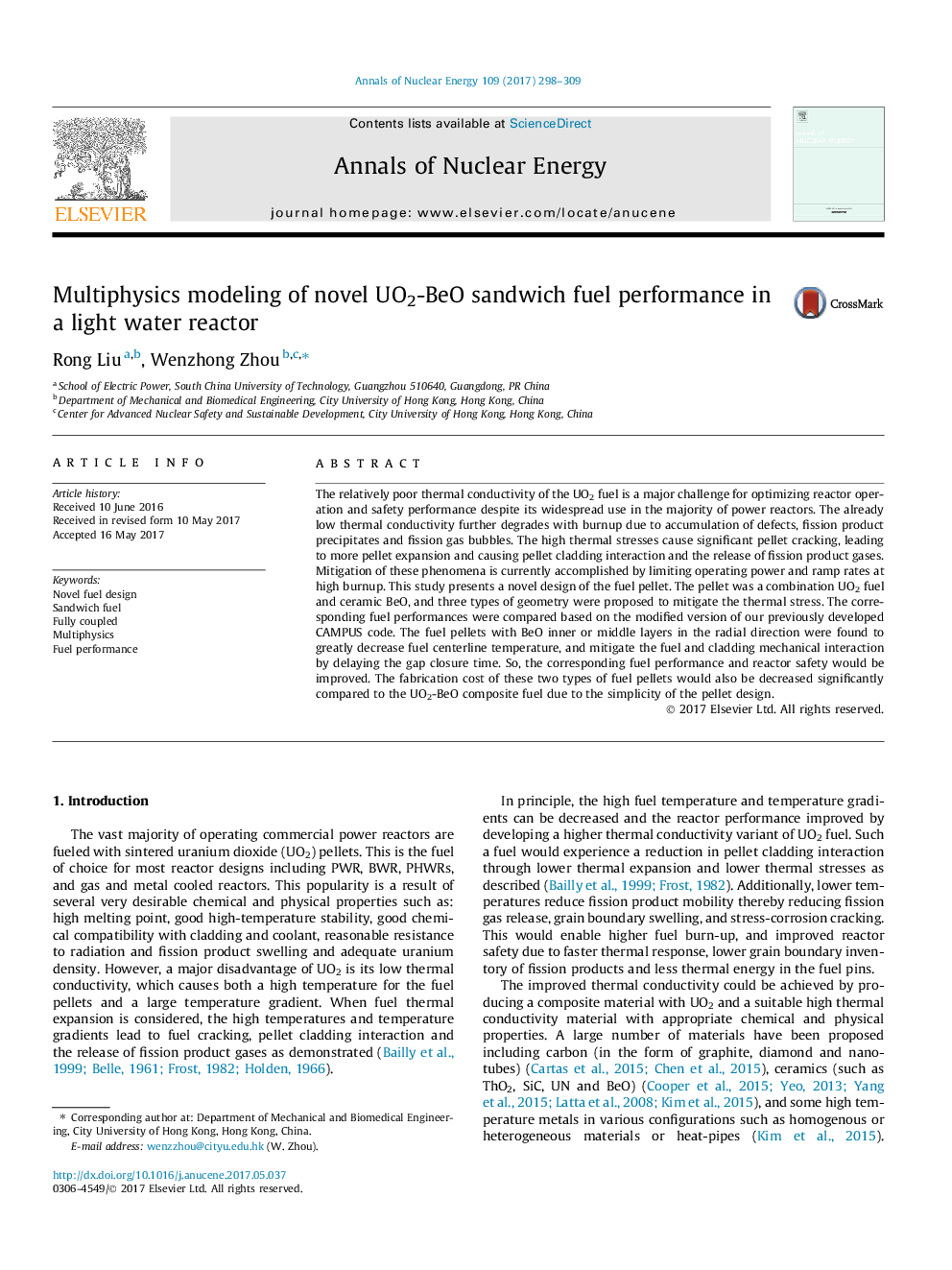| Article ID | Journal | Published Year | Pages | File Type |
|---|---|---|---|---|
| 5475054 | Annals of Nuclear Energy | 2017 | 12 Pages |
Abstract
The relatively poor thermal conductivity of the UO2 fuel is a major challenge for optimizing reactor operation and safety performance despite its widespread use in the majority of power reactors. The already low thermal conductivity further degrades with burnup due to accumulation of defects, fission product precipitates and fission gas bubbles. The high thermal stresses cause significant pellet cracking, leading to more pellet expansion and causing pellet cladding interaction and the release of fission product gases. Mitigation of these phenomena is currently accomplished by limiting operating power and ramp rates at high burnup. This study presents a novel design of the fuel pellet. The pellet was a combination UO2 fuel and ceramic BeO, and three types of geometry were proposed to mitigate the thermal stress. The corresponding fuel performances were compared based on the modified version of our previously developed CAMPUS code. The fuel pellets with BeO inner or middle layers in the radial direction were found to greatly decrease fuel centerline temperature, and mitigate the fuel and cladding mechanical interaction by delaying the gap closure time. So, the corresponding fuel performance and reactor safety would be improved. The fabrication cost of these two types of fuel pellets would also be decreased significantly compared to the UO2-BeO composite fuel due to the simplicity of the pellet design.
Related Topics
Physical Sciences and Engineering
Energy
Energy Engineering and Power Technology
Authors
Rong Liu, Wenzhong Zhou,
